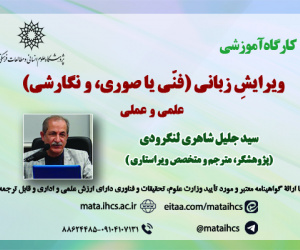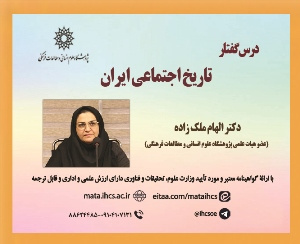ارزیابی بستر SDI شهری اهواز با استفاده از مدل شاخص آمادگی (مقاله علمی وزارت علوم)
درجه علمی: نشریه علمی (وزارت علوم)
آرشیو
چکیده
جمع آوری، مدیریت و واکاوی داده های موردنیاز، یک پیش شرط اساسی در زمینه مدیریت کلان و یکپارچه شهری محسوب می شود. امروزه این عملیات در قالب SDI قابل تحقق است که ارزیابی و شناسایی بسترهای پیاده سازی آن از مباحث کلیدی آن می باشد. هدف این تحقیق شناسائی عوامل محدودکننده ایجاد و برپایی زیرساخت اطلاعات فضایی شهری اهواز، بر اساس مدل فازی پایه شاخص آمادگی می باشد. داده های پژوهش به صورت پیمایشی گردآوری شده سپس تحلیل آن در مدل آمادگی زیرساخت اطلاعات فضایی انجام شده است. بنابراین زیرساخت اطلاعات فضایی شهری اهواز در پنج عامل سازمانی، منابع انسانی، اطلاعات، فناوری و مالی، و در قالب 16 مورد معیار تصمیم گیری، مورد ارزیابی قرار گرفته است. در گام نخست پژوهش، داده های موردنیاز از پرسش نامه های تکمیل شده توسط کارشناسان و متخصصان آشنا با SDI و GIS، از مراکز دولتی و بخش خصوصی اهواز، استخراج گردیده است در مرحله بعد و پس از گردآوری داده، مقادیر شاخص های کلی و عوامل پنج گانه بر اساس مدل مورداستفاده تحقیق محاسبه شدند. یافته های کلی پژوهش نشان داد وضعیت شاخص آمادگی زیرساخت اطلاعات فضایی شهری اهواز، برابر با 47/0 می باشد. ارزیابی عوامل موردمطالعه مدل نشان داد که عامل سازمانی مهم ترین مورد محدودکننده در توسعه زیرساخت SDI اهواز است و از میان معیارها نیز، بالاترین و کمترین امتیاز را به ترتیب دسترسی به نرم افزارهای مکان محور و رهبری فردی، به خود اختصاص داده اند. در مجموع، مطابق نتایج به دست آمده این پژوهش، 44% از مجموع 16 معیارهای تصمیم گیری (شامل 7 معیار)، در سطح پایین تر از مقادیر متوسط (50%) بوده اند که به عنوان عامل محدودکننده اصلی در توسعه زیرساخت اطلاعات مکان محور شهری اهواز عمل می نمایند. همچنین بر اساس نتایج این تحقیق، چنین به نظر می رسد که در توسعه SDI شهری اهواز، عوامل غیرفنی بیشتر از مسائل فنی می توانند به عنوان عامل محدودکننده مؤثر باشند.Evaluating Urban SDI of Ahvaz using Readiness Index Model
Collecting, managing and analyzing the required data is a basic precondition in the field of macro and integrated urban management. Today, this operation is feasible in the form of SDI, the evaluation and identification of its implementation platforms is one of its key issues. The purpose of this study is to identify the limiting factors for the creation and establishment of urban spatial information infrastructure in Ahvaz, based on the basic fuzzy model of the readiness index. The research data was collected in a survey and then analyzed in a spatial information infrastructure readiness model. Therefore, Ahwaz urban spatial information infrastructure has been evaluated in five organizational factors, human resources, information, technology and finance, and in the form of 16 decision criteria. In the first step of the research, the required data were extracted from questionnaires completed by experts and specialists familiar with SDI and GIS, from government centers and the private sector in Ahvaz. In the next step and after data collection, the values of general indicators and five factors were calculated based on the model used in the research. The general findings of the study showed that the readiness index of Ahwaz urban spatial information infrastructure is equal to 0.47. Evaluation of the studied factors of the model showed that the organizational factor is the most important limiting factor in the development of SDI infrastructure in Ahvaz and among the criteria, the highest and lowest scores have access to location-based software and individual leadership, respectively. In total, according to the results of this study, 44% of the 16 decision-making criteria (including 7 criteria) were below the average (50%), which acted as the main limiting factor in the development of Ahwaz urban location information infrastructure. Also, based on the results of this study, it seems that in the development of urban SDI in Ahvaz, non-technical factors can be more effective as a limiting factor than technical issues.
Extended
Introduction
Today, cities have a variety of aspects, each of which carries a large amount of data and information. The aggregation, organization, and management of this vast amount of data, most of which is geometrically and geographically structured, will not be possible with the past traditional methods. Therefore, to increase efficiency and optimization in this category, the need to use spatial data infrastructure (SDI) is obvious. In fact, SDI is seen as a stable mechanism for connecting users 'and data producers' spatial information. In this regard, today, the concept of spatial data infrastructure is considered an effective and useful tool for sharing data related to different sources and decisions in urban management. Access to many of the goals and requirements of different organizations depends on access to up-to-date and integrated spatial data. This is especially important at the macro level. Thus, SDI is considered as a platform for empowerment in communities in the field of location-based information. The nature of the data required in urban management is such that it must be collected and integrated through various data sources and used in the relevant analyzes. Therefore, the main purpose of this study is to evaluate the existing infrastructure of Ahvaz in terms of readiness for acceptance and implementation of urban SDI based on the index evaluation model of readiness index. The results of this evaluation by identifying and reflecting the limiting factors of urban location-based data infrastructure development can provide the necessary information for decision-makers and managers of Ahvaz SDI, fill the existing information gap related to the development of Ahvaz urban location-based data infrastructure, and finally, improve the knowledge of the SDI community and determine the national status of the urban SDI of Ahvaz.
Methodology
The methodology of the research is based on descriptive-analytical approaches. The data and information have been collected by surveying the city's experts. A questionnaire
containing 16 questions was prepared through a survey to measure the 16 decision criteria of the readiness index and then based on a range of seven options. The organizational factor is an indicator calculated based on three criteria of politicians' views on SDI, organizational leadership, and legal protections. Politicians’ views on SDI are applied to gauge their awareness of the importance of SDI development. Because many of the evaluation criteria are qualitative, the SDI readiness index model is based on compensatory fuzzy logic. A small SDI readiness index is obtained by calculating the geometric mean of the five organizational factors, information, human resources, financial resources, and technology. Similarly, the values of the factors are calculated according to the values obtained for the criteria. The values of the criteria were determined based on a survey of qualified experts in the field of SDI in the form of quality measurement scales from very high, high, medium, weak to very poor, and then with the help of a weighting system (between zero and one) are converted into small values. It is best to set these weights based on expert expertise to minimize the impact of personal and tasteful misconduct. In total, the numerical values calculated for the combined index, factors and related criteria are in the range of zero and one (1-0). The number one indicates complete readiness, and the number zero indicates the unpreparedness to accept the urban SDI of Ahvaz.
Results and Discussion
In the survey data collection stage, the first attempt was made to use as many experts as possible in the field of spatial information infrastructure. Due to the lack of experts in the field of spatial information infrastructure, the survey was conducted with the participation of 14 experts, who mainly worked in GIS or IT units. At the end of the survey, the data and information recorded in each questionnaire were entered into Excel software and then the qualitative values of the options were converted into small values. In the next step, using these values, first for each questionnaire, the score of each of the five factors and the overall index of the model were calculated and then by geometric averaging, the final scores of the factors and the overall index of the model were determined.
Conclusion
The results showed that the SDI readiness index of Ahvaz is equal to 0.47. This value is lower than the average (0.50), which indicates the weakness of the existing infrastructure in Ahvaz to accept and launch an SDI, so improving the status of limiting factors to facilitate and accelerate the creation of SDI seems a necessity. Moreover, organizational factors, human resources, and information were recognized as the most important limiting factors in developing SDI in Ahvaz, respectively. Also, the review of decision-making criteria related to the five factors studied showed that the criteria of individual leadership, politicians' views, organizational leadership, legal protections, private sector investment and access to metadata, with scores lower than the average, are not satisfactory and can be one of the key limiters. On the other hand, the study of limiting factors and criteria showed that most of the limiting factors and criteria are non-technical in nature and the role of technical issues in the development of urban SDI in Ahvaz seems less than non-technical issues. Of course, this conclusion does not mean less technical issues in the development of urban SDI in Ahvaz because among the limiting criteria, access to metadata, as an example of technical issues, scored about 0.39 and upgraded its current status to the conditions. It is essential to support the Ahvaz urban location-based information infrastructure. Despite these barriers, the favorable situation of access to location-based software, web access, government investment, human capital and progress in the field of geographic map and data has been the most critical strengths identified in the research.
Funding
There is no funding support.
Authors’ Contribution
All of the authors approved thecontent of the manuscript and agreed on all aspects of the work.
Conflict of Interest
Authors declared no conflict of interest.
Acknowledgments
We are grateful to all the scientific consultants of this paper.





